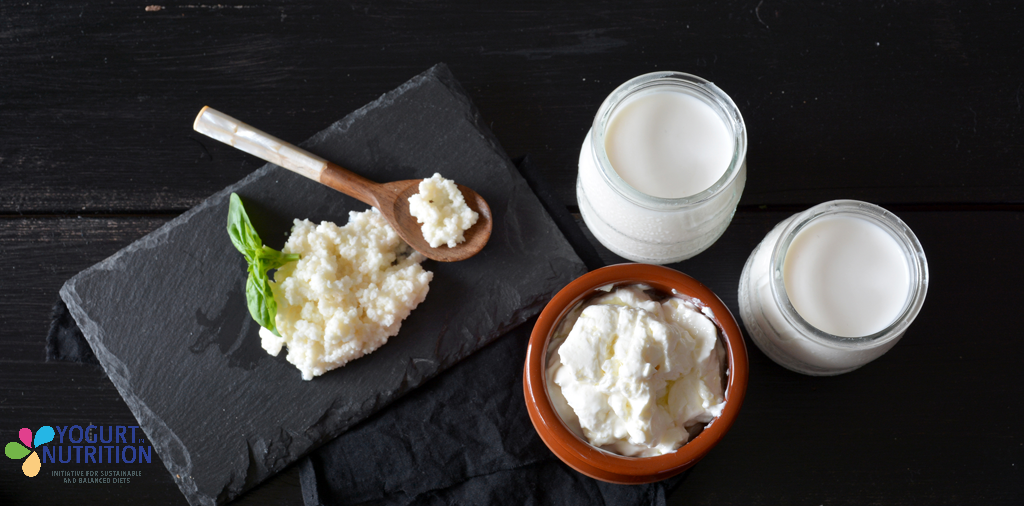The interest of scientists in the secrets of fermentation has been growing in recent years. This technique, whose beginnings of use go back to the Antiquity [1], has been valued for a long time because it allowed and still allows to enhance the self-life of food products, while conferring atypical organoleptic qualities. Today, many studies are focusing on the nutritional and health benefits of fermentation.
A small overview of fermented foods
When we talk about fermented products, it is very common to think first of lactic fermentation. Indeed, many products that we consume daily are the result of a fermentation carried out by bacteria and yeasts naturally found in the food or added. Cheese, yogurt but also more atypical products such as milk kefir (fermented milk drink made using kefir grains that contain bacteria and yeasts) are dairy fermented foods.
Yet, over 5000 types of fermented foods are produced and consumed around the world and a huge variety of fermented foods has been developed throughout history, including vegetables, cereals and breads, soybean products, fish products, and meats.
Moreover, experts recently agreed on the definition of fermented foods being ‘foods made through desired microbial growth and enzymatic conversions of food components’ [2]. Among this definition, we can distinguish:
- Foods without live microorganisms at the time we eat/drink them: bread, wine, cocoa or coffee beans, for instance.
- Foods with live microorganisms: sauerkraut, kimchi, kefir, yogurt, cheese, kombucha, or miso for example.
Fermented foods may contribute to a healthy gut microbiota
Fermented foods, including sauerkraut, kimchi, kefir, yogurt or cheese, ordinarily contain viable microorganisms in average up to 106 cells/g [3]. A small portion surviving in the digestive tract [4], these bacterial strains and microbes contained in the fermentation matrix will enrich the population of the intestinal microbiota, up to 10,000 times according to a study [5]. Such a supplementation in microbes coming from food may be beneficial for the development of the immune system, maintenance of gut health with an enhanced intestinal microbiota and cognitive functions.
Regular consumption of fermented dairy products provides beneficial microorganisms to the intestinal microbiota. Digestive pathologies or discomfort such as lactose intolerance, diarrhea, constipation or irritable Bowel syndrome could be improved by consuming fermented dairy products like yogurt [6].
‘The strongest evidence supporting the health benefits of fermented foods is for their ability to improve lactose digestion and tolerance.’ – Savaiano and Hutkins, 2020.
Indeed, during the lactic fermentation process, bacteria secrete bioactive compounds with health-modulating potential [3]. Among these molecules, vitamins of the B group (B12, B9, riboflavin…), but also proteins with antioxidant properties [7].
The presence of lactic acid produced during fermentation is associated with a reduction in the secretion of pro-inflammatory cytokines, and therefore pro-inflammatory response [8].
Some dairy fermented foods are probiotic
A fermented food may be described as a “probiotic food” only if:
- It contains live microorganisms at the time it is eaten,
- Those microorganisms (bacterial or yeast strains) are well defined and have shown a health benefit in a scientific study, and
- The strains are present in the final food product in sufficient numbers to confer the health benefit.
Actually, probiotics are defined as specific microorganisms that remain alive within the gut after being ingested and are proven to confer a health benefit.
Fermented foods associated with reduced cardiovascular diseases and mortality risk
Beyond basic nutrition aspects, eating fermented foods consumption has been associated with many positive health outcomes.
A recent study [6] has shown that fermented milks and yogurt consumption is associated with weight control, including less obesity, reduced body fat and decreased weight gain over years. Also related to forms of malnutrition, combined results of clinical studies and meta-analysis [9,10,11] prove that yogurt consumption in particular is associated with a reduced risk of type 2 diabetes mellitus but also a reduced risk of cardiovascular disease (CVD) and overall mortality.
Studies also suggest that the consumption of dairy fermented foods is associated with a reduced risk of CVD because some components may interfere with cholesterol pathways [10], lower blood pressure (antihypertensive properties), probably linked to a reduction in cardiovascular diseases, such as stroke, but more trials are required to confirm this assessment [10].
Eating fermented foods may benefit your brain functions
Scientists agree today to call our intestine “the second brain”. Indeed, the gut microbiota itself seems to be extremely linked to cognitive functions according to a “microbiota-brain-gut” axis. According to several studies [12,13], gut symbiotic microbes can regulate neurotransmitters secretions and therefore, affect mood and mental health, but also synthetize themselves short-chained fatty acids and some neurotransmitters (GABA, acetylcholine, serotonin…). By eating fermented foods, we allow our microbiota to remain rich, with diverse and healthy strains, in order to provide neuroactive functions and prevent both metabolic and behavioral illnesses [13].
Fermented foods are thus increasingly being considered for their properties that go well beyond preservation and sensory attributes. At the same time, the increased interest in the human microbiome as a major determinant of human health and behavior underscores the importance of and need for research to understand the functions and effects of microorganisms and/or the components they synthesize contained in fermented products.
If you want to know more about Gut health, check our infographics on Children’s Gut Health and How to support a healthy gut in children?
For more information:
- Fermented foods: recent data and place in sustainable diets
- Why fermented foods should be represented in nutritional guidelines?
- How fermented foods make you feel good
- How yogurt affects the gut microbiota?



